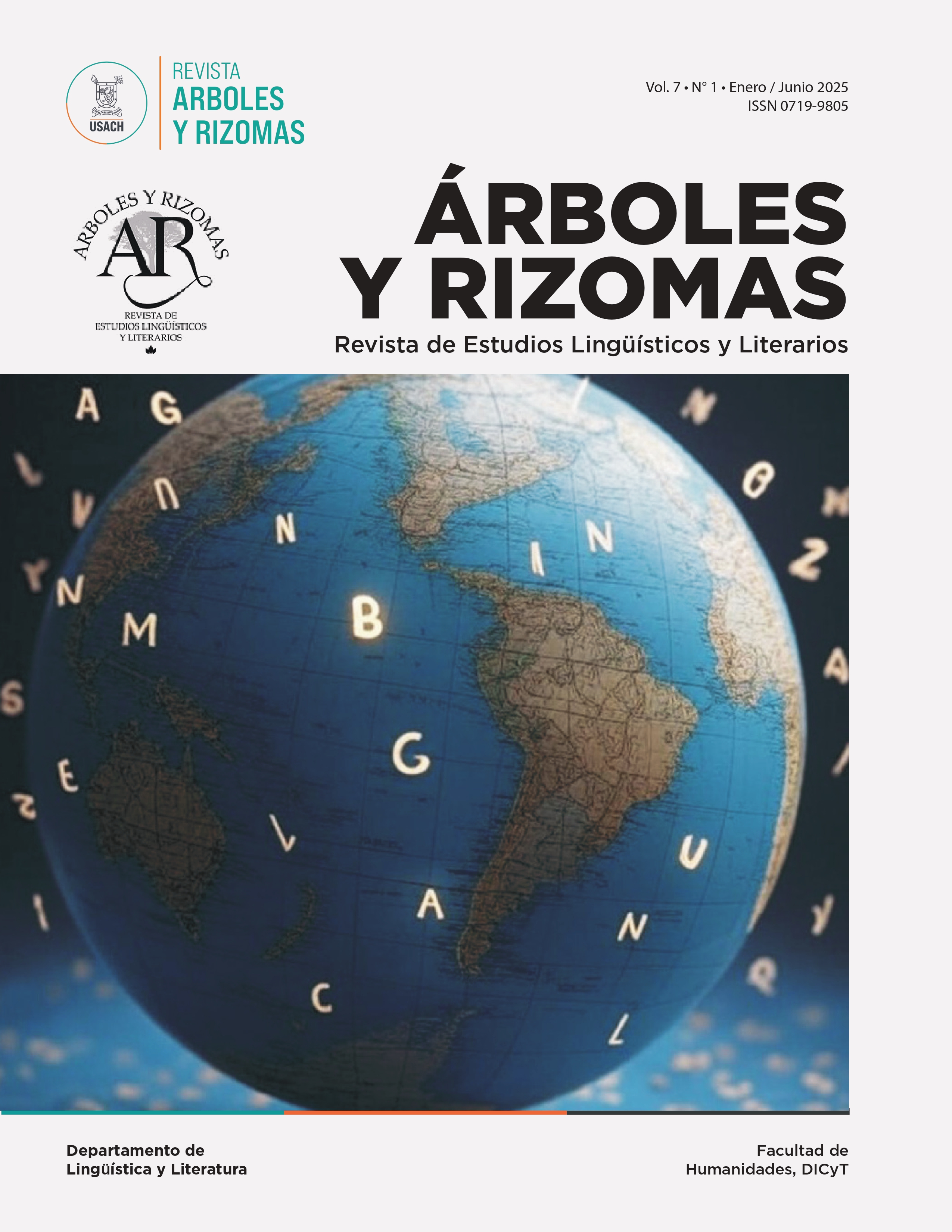Narrating transvestite constellations: Naty Menstrual’s Continuadísimo
DOI:
https://doi.org/10.35588/ayr.v7i1.7242Keywords:
transvestite constellations, scatological language, disease, transvestite, Naty MenstrualAbstract
This article analyses the short stories in Naty Menstrual’s Continuadísimo (2008), identifying the themes that structure the narratives. By examining the repetition of themes such as violence, drug use and disease, reinforced by dirty language, the study shows how Menstrual’s writing destabilises normative discourses on gender, sexuality and power. The transvestite trash aesthetic proposed by the author constructs a grotesque poetics of excess that transforms exclusion into a space of radical resistance. The representation of violence is not simply structural oppression, it becomes a mechanism of agency and retaliation that redefines the limits of intelligibility imposed on dissident groups. Similarly, the insistence on filth, bodily fluids and bodily decomposition undermines hegemonic ideals of purity and inserts the abject into a counter-narrative that claims its destructive power. Drug use is not only a symptom of exclusion, but is also seen as a performative practice that allows the protagonist to construct his or her own reality outside the normative frameworks of pleasure and identity.
Downloads
References
Alloatti, J., y Cardozo L. N. (6-8 de noviembre de 2017). Rompeme el culo: rebeldía y empoderamiento travesti en Naty Menstrual. VI Congreso Internacional CELEHIS de Literatura. Literatura argentina, española y latinoamericana, Mar de Plata, Argentina.
Baigorria, O. (2009). Feos, sucios y románticos. Eterna Cadencia. https://eternacadencia.wordpress.com/2009/01/08/feos-sucios-y-romanticos/
Barreda, V., & Isnardi, V. (20-23 de octude de 2004). Travestismo y prevención del VIH/sida: reacomodando algunos conceptos. VI Jornadas de Sociología, Buenos Aires, Argentina.
Berkins, L., y Korol, C. (2007). Diálogo: “Prostitución/Trabajo sexual: las protagonistas hablan”. Feminaria.
Bevacqua, G. (2013). La corporalidad travesti en la deformance poética de Naty Menstrual. Revista Brasileira de Estudos da Presença, 3(3), 819-838.https://seer.ufrgs.br/index.php/presenca/article/view/39426
Bourdieu, Pierre. (2007). La miseria del mundo (H. Pons, Trad.). Fondo de Cultura Económica. (Obra original publicada en 1993).
Butler, J. (2002). Cuerpos que importan: sobre los límites materiales y discursivos del “sexo”. (A. Bixio, Trad.). Paidós. (Obra original publicada en 1993).
Butler J. (2009). Performativity, Precarity and Sexual Politics. AIBR, 4(3), 321-336. https://doi.org/10.11156/aibr.040303e
Fernández, J. (2004). Cuerpos desobedientes: travestismo e identidad de género. Edilasa.
Galtung, J. (1969). Violence, Peace, and Peace Research. Journal of Peace Research, 6(3), 167–191. http://www.jstor.org/stable/422690
Garber, M. (1992). Vested Interests: Cross-Dressing and Cultural Anxiety. Routledge.
Kristeva, J. (2006). Poderes de la perversión (N. Rosa & V. Ackerman, Trad.). Siglo XXI. (Obra original publicada en 1980).
Menstrual, N. (2008). Continuadísimo. Eterna Cadencia.
Menstrual, N. (2012). Batido de trolo. Milena Caserola.
Meruane, L. (2012). Viajes virales: La crisis del contagio global en la escritura del sida. Fondo de Cultura Económica.
Millet, A. (2020). Cisexismo y salud. Algunas ideas desde otro lado. Puntos Suspensivos Ediciones.
Montes, A. (2023). Devenir travesti: el cuerpo como intervalo problemático. En Audran, M. y Sánchez, S. (Eds.), Devenir Monstruo. Ensayos sobre narrativa argentina reciente (pp. 463-486). FaHCE.
Peralta, J. L. (2010). La narrativa travesti de Naty Menstrual, Lectora, (17), 105-122. https://revistes.ub.edu/index.php/lectora/article/view/7209
Pierce, J. (2020). Yo monstrúo. Encarnando la resistencia trans y travesti en latinoamérica. El lugar sin límites, 2(4), 165-194. https://revistas.untref.edu.ar/index.php/ellugar/article/view/833
Preciado, P. B. (2008). Testo Yonqui. Espasa Calpe.
Sánchez Osores, I. (2022). La política de la suciedad: transfiguraciones de lo sucio en la poesía travesti del Cono Sur (Shock Rodríguez, Sosa Villada). En L. Caminada y F. Gonçalvez. (Eds.), Políticas y narrativas del cuerpo (pp. 503-529). EUDENE.
Sontag, S. (2020). Malattia come metafora e L’AIDS e le sue metafore (P. Dilonardo, Trad.). Nottetempo. (Obra original publicada en 1977).
Sosa Villada, C. (2019). Las malas. Tusquets.
Valencia, S. (2010). Capitalismo gore. Melusina.
Wayar, M. (2018). Travesti: una teoría lo suficientemente buena. Muchas Nueces.
Downloads
Submitted
2025-03-23Published
Issue
Section
License
Copyright (c) 2025 Manuel Gatto

This work is licensed under a Creative Commons Attribution 4.0 International License.






